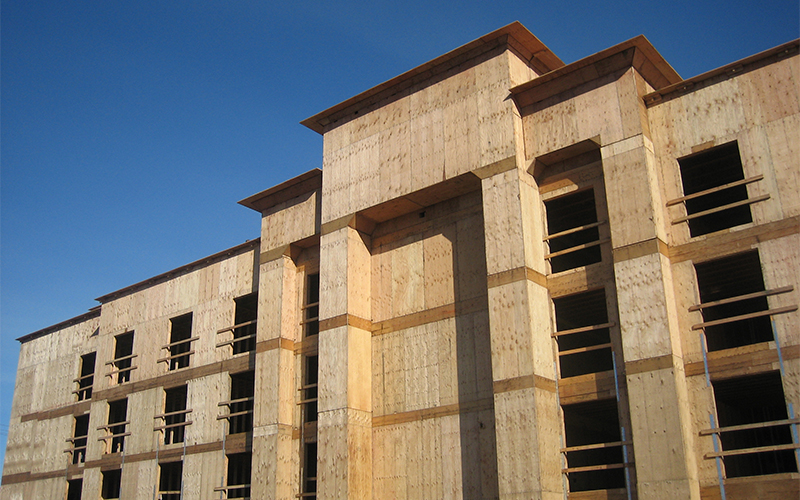The increasing threat of climate change has more and more building owners and homebuyers considering the sustainability of their structures and the role construction plays in global warming and use of our natural resources.
What Makes a Sustainable Structure?
According to the Environmental Protection Agency (EPA), green building is the practice of maximizing the efficiency with which buildings and their sites use resources—energy, water and materials—while minimizing impacts on human health and the environment through the complete building lifecycle, from siting, design and construction, to operation, renovation and reuse.
Green building programs and codes first emerged in the 1980s, and as they have evolved, so have their targets. As global warming intensifies, an increased emphasis has been placed on reducing carbon emissions.
Architecture 2030 notes that the building and construction sectors account for nearly 50% of global energy-related greenhouse gas emissions—which are responsible for global warming and climate change. The current building energy code only addresses operational energy but not the impacts of embodied energy/carbon in building materials.
How Do We Compare Building Materials?
Embodied carbon, or materials carbon, refers to emissions related to construction and building materials. These embodied emissions encompass all greenhouse gas emissions that arise from the extraction, manufacture, transport, installation, maintenance and disposal of building materials.
Reducing the embodied carbon in buildings requires understanding the carbon footprint of the materials that go into them. Carbon accounting is the process of calculating overall greenhouse gas emissions associated with the building materials—how much carbon is sequestered into materials (the process of capturing, securing and storing carbon dioxide from the atmosphere) versus how much greenhouse gases are emitted during extraction, manufacturing, construction and eventual demolition and disposal, as well as emissions during habitation.
If sequestration and emissions are equally balanced, the project is carbon neutral or even carbon negative. Carbon neutrality can be accomplished several ways, but often begins with a design that incorporates carbon sequestering materials, such as engineered wood.
Engineered Wood Products and Embodied Carbon

Compared to steel and concrete, engineered wood products typically result in far less emissions because they don’t require drastic changes to the material’s original form and because wood manufacturers often use wood waste to power the manufacturing process. This reduces the use of fossil fuels, which have high carbon emissions.
In addition, wood naturally sequesters carbon. Modern forestry standards ensure a continuous cycle of growing, harvesting and replanting of trees. These newly replanted trees absorb more carbon at a faster rate than old, slower growing trees. It’s this lifecycle of planting, growing, harvesting, sequestering carbon in buildings and replanting, that makes wood an excellent sustainable resource.
The Sustainability Benefits of Engineered Wood
Engineered wood products (EWP) not only offer the lower embodied carbon and carbon sequestration benefits of wood, but they provide additional green building benefits including:
- Due to how they are made, engineered wood products can be produced from small-dimension lumber. Engineered wood products therefore also optimize timber resource utilization.
- Engineered wood products are predictable, so there’s less shrinkage, consistent dimensions, less crowning, etc.—and therefore less waste.
- Many engineered wood products are available in custom and longer lengths, and can be ordered in pre-cut framing packages, all of which further reduces waste.
- EWP manufacturing involves a lower-energy-use process that is more energy efficient than the manufacture of non-wood structural products that typically require a greater level of processing from the raw materials to the final product.
When we compare wood floor systems to steel floor systems and wood wall systems to concrete wall systems, the carbon savings add up quickly. According to the Consortium for Research on Renewable Industrial Materials (CORRIM), choosing wood floor assemblies over steel can avoid approximately 22 pounds of CO2 for every square foot of floor, while choosing wood wall assemblies over concrete can avoid about 15 pounds of CO2 for every square foot of wall area.
Using wood building materials can reduce the net carbon impact of a project in many ways, particularly because wood emits significantly less CO2 from production than other materials. If carbon storage capabilities are factored in, the benefits of wood become even more significant.
Ready to learn more? Watch APA – The Engineered Wood Association’s on-demand webinar, “Sustainable Structures Built with Engineered Wood,” for a deeper dive into engineered wood’s role in reducing the carbon footprint of the built environment. Available to view in English or Spanish. CEUs available.
Find additional green building and design tools and resources at www.apawood.org/green-building.






